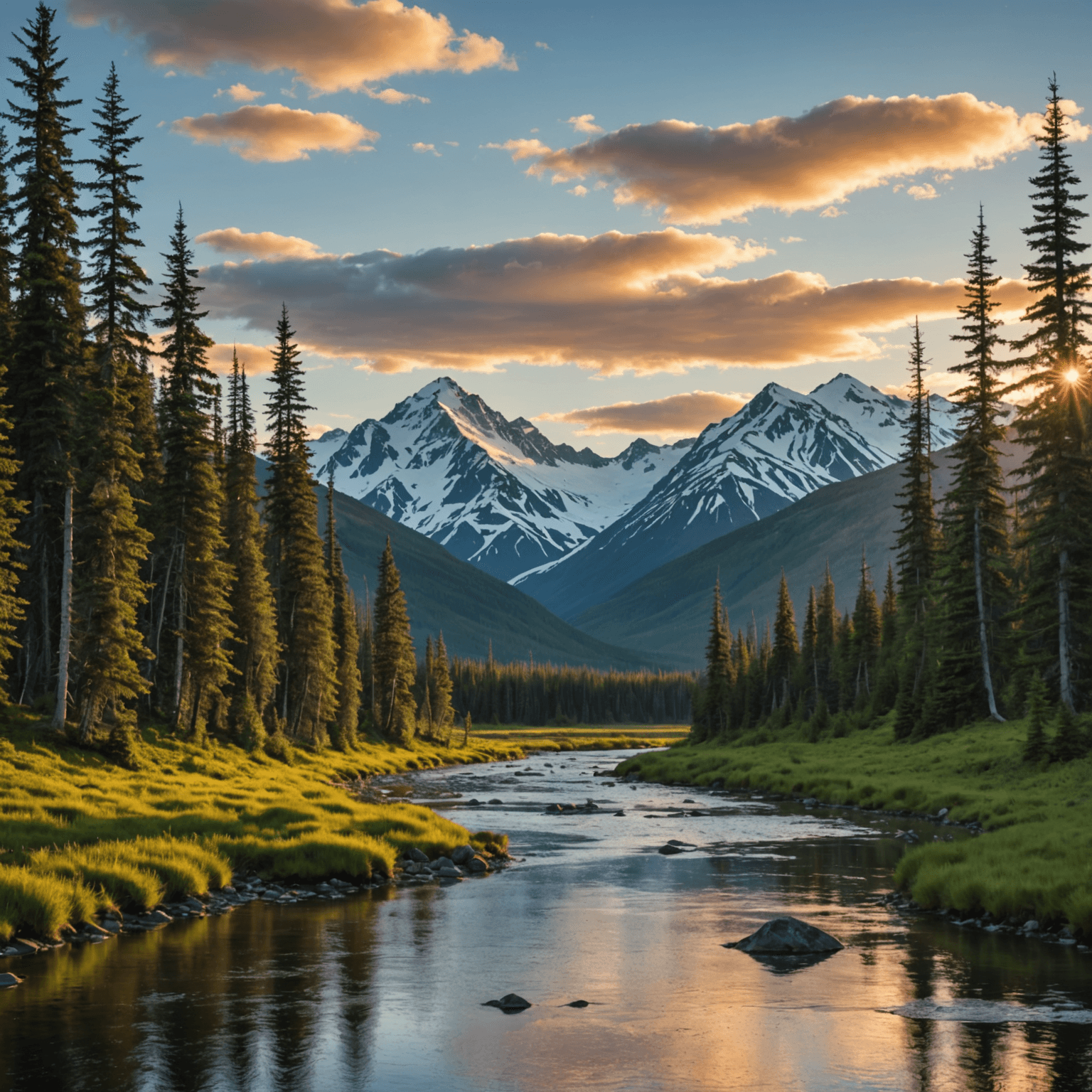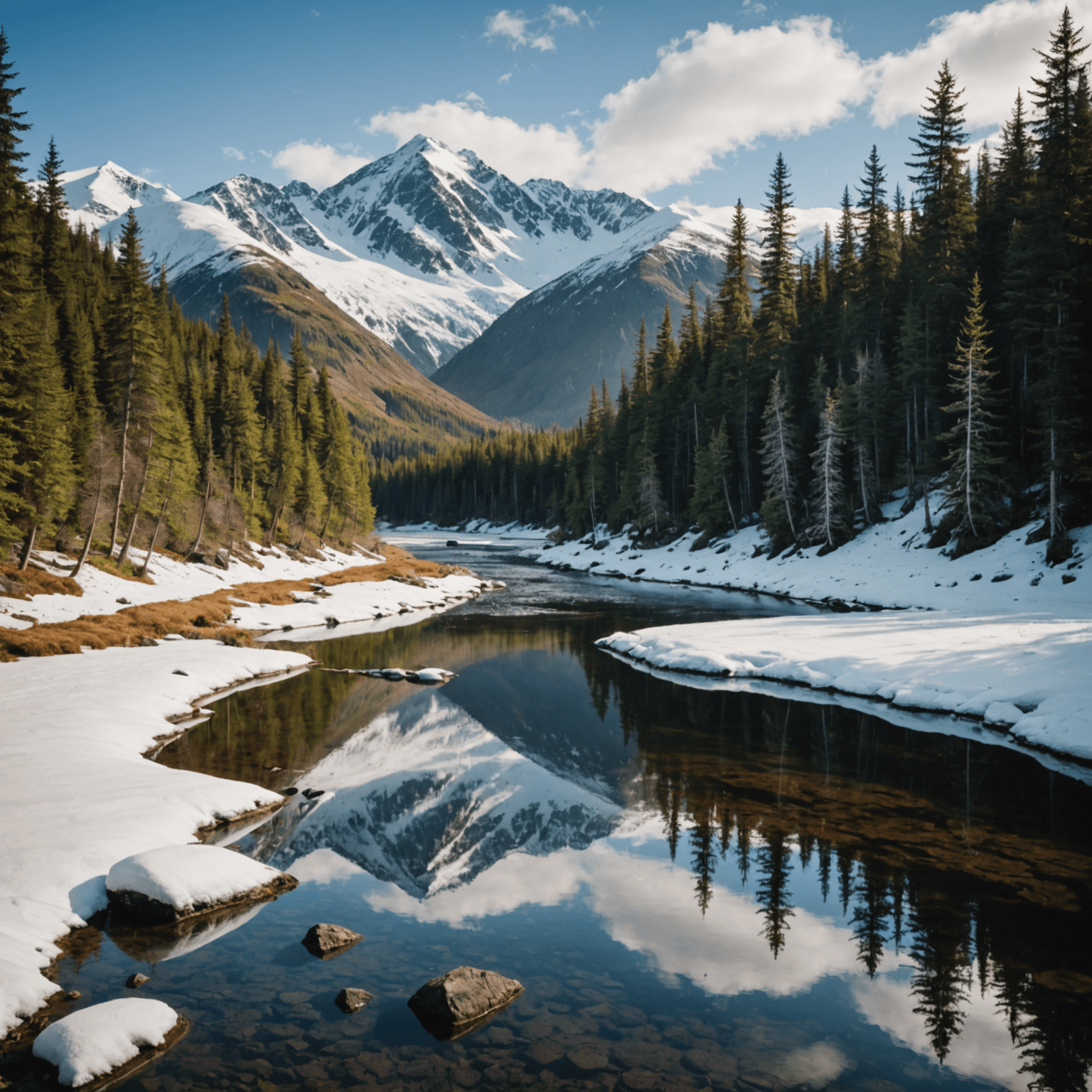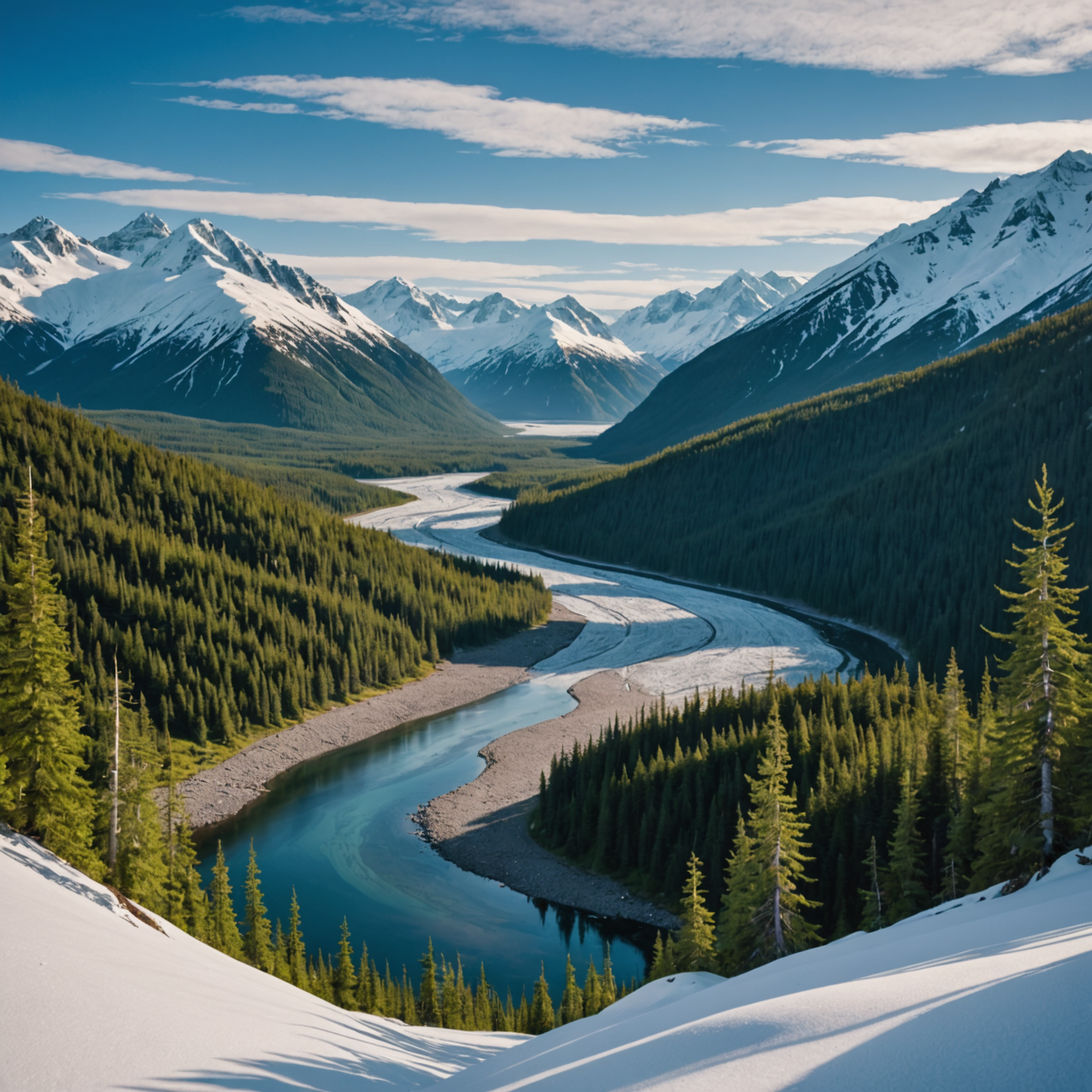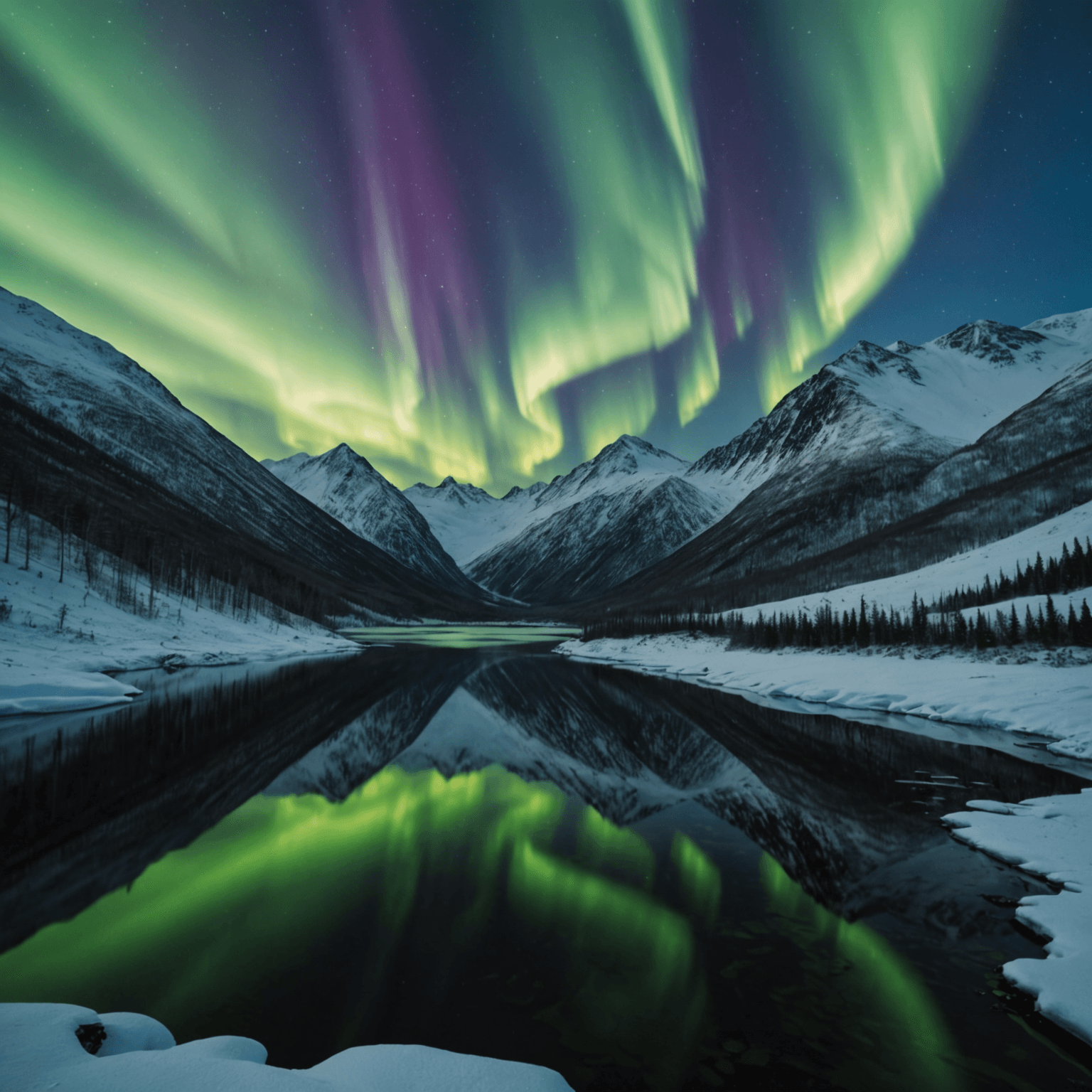Introduction
Alaska, the Last Frontier, is a haven of unspoiled wilderness and breathtaking landscapes. Known for its diverse wildlife and dramatic natural formations, this state offers a unique travel experience that appeals to adventurers and nature lovers alike. Whether you’re drawn by the majestic mountains or the charming small towns, there are countless beautiful places in Alaska you must see. This guide will take you through ten of these must-see destinations, each offering a glimpse into the natural beauty and cultural richness that define Alaska.
Denali National Park and Preserve
Denali National Park and Preserve is a must-visit location for anyone traveling to Alaska. Home to the tallest peak in North America, Denali, the park offers a stunning backdrop of towering mountains, lush forests, and crystal-clear rivers. The park covers over six million acres, providing ample opportunity for hiking, wildlife viewing, and exploration. Visitors can spot grizzly bears, caribou, and moose roaming the vast tundra.
For those interested in an active adventure, consider exploring Denali through a guided Alaska winter tour or an all-glacier activities experience.
Kenai Fjords National Park
Kenai Fjords National Park is renowned for its awe-inspiring fjords and abundant marine wildlife. The park’s crown jewel, the Harding Icefield, spawns over 40 glaciers that carve their way through the rugged terrain. Visitors can take a boat tour to see the stunning Aialik Glacier and watch for whales, sea lions, and puffins along the rocky shores.

For those interested in a unique perspective, consider a dog sledding helicopter combo tour to see the fjords from above.
Glacier Bay National Park and Preserve
Glacier Bay National Park and Preserve is a UNESCO World Heritage Site that offers a mesmerizing landscape of glaciers, fjords, and temperate rainforests. With over 3.3 million acres of protected land, this park is a paradise for kayakers, hikers, and wildlife enthusiasts. Visitors can witness the dramatic calving of glaciers and spot humpback whales and orcas in the icy waters.
For more information on planning your visit, check out Travel Alaska’s guide to the park.
Wrangell-St. Elias National Park and Preserve
As the largest national park in the United States, Wrangell-St. Elias National Park and Preserve is a destination that should be on every traveler’s list. The park encompasses a staggering 13.2 million acres and features some of the tallest mountains in North America. It’s a haven for mountaineers and offers unparalleled opportunities for backcountry skiing and hiking.
For those who prefer structured tours, Snowhook Adventures offers a variety of excursions, including ATV tours in Hatcher Pass.
Katmai National Park and Preserve
Famous for its brown bears, Katmai National Park and Preserve offers visitors the chance to see these magnificent creatures in their natural habitat. The park’s Brooks Falls is a prime location for bear viewing, especially during the salmon run. In addition to its wildlife, Katmai features stunning volcanic landscapes, with the Valley of Ten Thousand Smokes offering a dramatic reminder of the area’s volcanic past.
For more information on wildlife safety, consult the Alaska Department of Fish and Game’s guidelines.
Skagway
Skagway is a small town with a big personality. Known for its Gold Rush history, Skagway offers a charming glimpse into Alaska’s past. Visitors can explore the historic buildings along Broadway Street or take a ride on the White Pass & Yukon Route Railway for panoramic views of the surrounding mountains. Skagway serves as a gateway to the Klondike Gold Rush National Historical Park, where you can delve deeper into the area’s rich history.
For more travel planning tips, visit Alaska.org.
Seward
Nestled at the gateway to Kenai Fjords National Park, the town of Seward is a picturesque harbor town that boasts stunning views of Resurrection Bay. It’s a hub for outdoor activities, offering opportunities for kayaking, fishing, and hiking. The Alaska SeaLife Center, located in Seward, is a must-visit for those interested in learning more about the region’s marine life.
For weather updates and safety information, check the National Weather Service.
Talkeetna
Talkeetna is a quaint town that serves as a base camp for climbers attempting to summit Denali. With its vibrant arts scene and friendly locals, Talkeetna offers a unique blend of adventure and culture. Visitors can enjoy flightseeing tours over Denali, explore local art galleries, or simply relax with a coffee at one of the town’s cozy cafes.
For more on Talkeetna’s attractions, visit the Talkeetna Chamber of Commerce.
Hatcher Pass
Hatcher Pass is a breathtaking mountain pass located in the Talkeetna Mountains. It’s a popular destination for hiking, skiing, and snowboarding. The area is also home to the Independence Mine State Historical Park, where visitors can explore the remnants of a 1930s gold mine. The scenic drive through the pass offers stunning views of the surrounding peaks and valleys.

To explore Hatcher Pass with a guided tour, consider Hatcher Pass snowmobile adventures.
Anchorage
As Alaska’s largest city, Anchorage is a vibrant urban center surrounded by natural beauty. The city offers a wide range of cultural attractions, including museums, art galleries, and theaters. Visitors can explore the Tony Knowles Coastal Trail, which offers stunning views of the Cook Inlet and the Chugach Mountains. Anchorage serves as a convenient base for exploring the rest of the state.
For more information on Anchorage’s attractions, visit Anchorage.net.
Conclusion
From the rugged wilderness of Denali and the stunning fjords of Kenai to the charming towns of Skagway and Talkeetna, Alaska offers a wealth of beautiful places waiting to be explored. Whether you’re seeking adventure in its national parks or cultural experiences in its small towns, Alaska promises an unforgettable journey. As you plan your trip, consider guided tours and excursions to make the most of your visit to this remarkable state.
FAQ
1. When is the best time to visit Alaska?
The best time to visit Alaska is during the summer months, from May to September, when the weather is milder and the days are longer. However, winter offers unique opportunities for activities like dog sledding and viewing the Northern Lights.
2. How can I see the Northern Lights in Alaska?
To see the Northern Lights, plan your visit between September and April. For an ultimate experience, consider a Northern Lights adventure tour.
3. What should I pack for a trip to Alaska?
Pack layered clothing to accommodate varying temperatures, sturdy hiking boots, rain gear, and insect repellent. If visiting in winter, include thermal wear and a good quality coat.
4. Are there guided tours available in Alaska?
Yes, Alaska offers a variety of guided tours, from snowmobile tours to helicopter and dog sledding combos, ensuring a memorable experience.
5. Is it safe to encounter wildlife in Alaska?
While wildlife encounters can be thrilling, always maintain a safe distance and follow the Alaska Department of Fish and Game’s safety guidelines.
6. Can I visit Alaska’s national parks year-round?
Some parks are accessible year-round, but accessibility may be limited in winter due to snow. Check individual national park websites for current conditions and accessibility.
7. What are the transportation options for getting around Alaska?
Alaska offers various transportation options, including rental cars, trains, and small plane charters. Public transportation is limited, so plan accordingly.
8. How can I prepare for Alaska’s weather conditions?
Monitor weather updates from the National Weather Service and pack suitable clothing for changing conditions, especially if venturing into remote areas or higher elevations.


